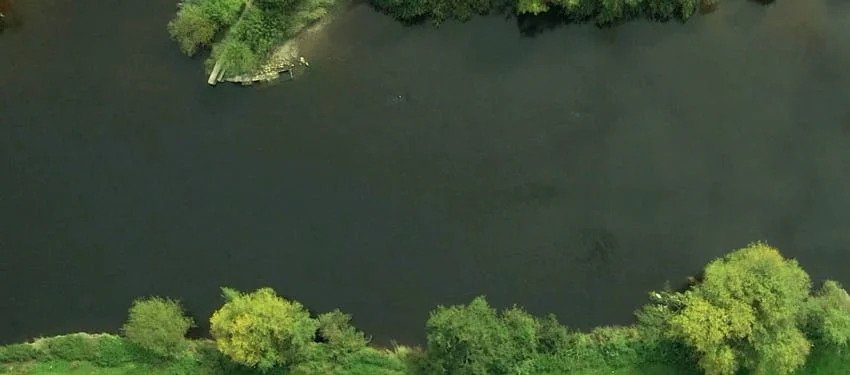Monday 5th October, 2020
In a public meeting last week, Natural Resources Wales confirmed that they expected a data review to show that the Upper Wye has been exceeding its permitted phosphate levels for at least the last four years.
In 2016, more stringent limits for phosphate in all rivers were recommended by the UK’s Technical Advisory Group for the EU Water Framework Directive. They had concluded that the previous limits were not fit for purpose. However, following strong objections from the water companies, the Welsh and Westminster Governments relented, reverting to the more relaxed rules for Wales and England. The new thresholds were, however, adopted by the Scottish Government.
While maintaining that phosphate levels in the Wye have been falling in recent years (a claim that is disputed on the basis of inadequate monitoring and obvious ecological changes seen in the river), Natural Resources Wales now appear to be recommending a re-adoption of the more stringent phosphate limits of 2016.
While we await official confirmation, the potential implications for the Wye of this change in position are substantial. Furthermore, it will mean that many other SAC-designated rivers in Wales are also likely to be failing their phosphate limits, including the Usk.
As a result, the regulator might soon be advising County Council’s in SAC catchments across Wales that any domestic, industrial or agricultural planning application will need to offset its phosphate impact on the river.
Increasing amounts of phosphate entering the river higher up the catchment than before, combined with more sunshine and low flows are the cause of the Wye’s increasingly intense algal blooms. One of the main effects of these blooms is to block out light entering the river. This stifles the growth of ranunculus, a highly protected (SAC-designated) plant that is vital for the river’s ecology. It is important as a food source for swans and as a habitat for invertebrates. It is also essential as habitat and refuge for fish, especially the Wye’s coarse species. Our recent survey found its abundance was the single most important factor in determining numbers of Wye coarse fish.
The photo above shows a section the Wye near Ross in 2020 compared to the title image, which is the same section in 2019 in similar water levels. The 2020 photo shows clearly that the ranunculus has failed to recover from the winter floods, almost certainly because of the low light levels in the water at the peak growing time of early summer. The same situation has been witnessed at many sites throughout the middle and lower reaches of the Wye this year.
This shift by the regulator has almost certainly come about through political pressure generated by the media interest and public outcry following a press release we published in June about the Wye’s algal blooms. So strong was the reaction, the matter was even raised in Parliament.
However, this is only the start. The anticipated adjustment to the planning process should mean a welcome halt in the rise of the upper Wye catchment’s phosphate levels but on its own will not be enough to prevent future algal blooms in dry and sunny periods.
For this to happen we also need to reduce the amount of phosphate entering the rivers. The Foundation have been working hard all summer with farmers, supermarket suppliers, Natural Resources Wales, Environment Agency, Powys and Herefordshire County Council to find ways to reduce the current levels. It is hoped that the new regulatory stance will lead to wide-ranging cooperation in Wales to retrofit solutions where poor planning decisions have previously been made.
Effective enforcement from the regulator will also be crucial in reducing levels of phosphate. It is worth mentioning that at a time when the Environment Agency has come under intense scrutiny itself, they currently have 10 officers on the ground in Herefordshire checking that the Basic Rules for Water are being followed. These officers found 22 breaches in one week, which they are following up on. Similar standards in enforcement must be achieved on the western side of the border too.
The work to reverse the phosphate issue will take time and as we have found out, there are those who retain a strong interest in the status quo.
Algal blooms may well be with us for a while yet but for now, the hope is that this change of position by the regulator will at least prevent any further worsening of a problem that is blighting the nation’s favourite river.
Nation’s ‘Favourite’ River Facing Ecological Disaster – Monday 8th June, 2020

